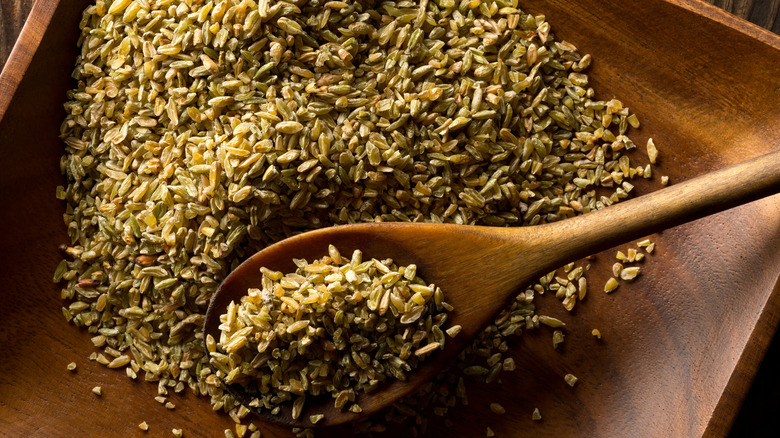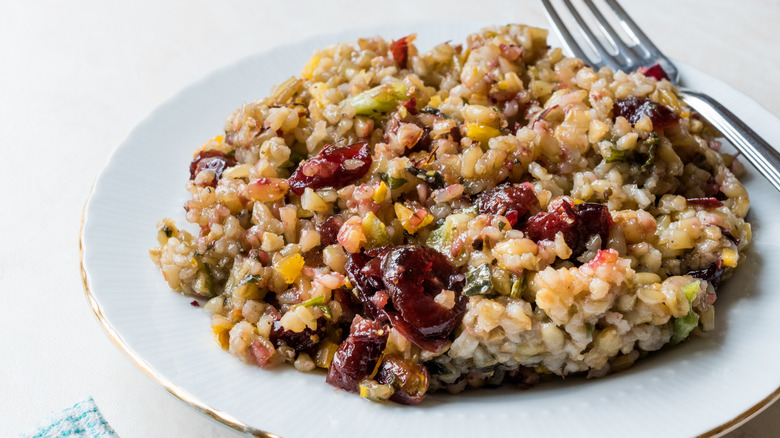What Is Freekeh And How Is It Used?
Like history, food traditions go through cycles, with dishes of yore often finding their way back into modern diets. One category of food with ties to the past is ancient grains. While barley, quinoa, amaranth, farro, and others have increasingly found their way into the bulk food aisles of major supermarkets, freekeh is still in its early days of modernity. Although Oprah put it on the radar in 2011, naming it as one of four ancient superfoods to boost your health, it hasn't quite made the headlines like quinoa.
Freekeh's history dates back to 2,300 BC when, according to Two Healthy Kitchens, it was discovered through an enemy attack that set fire to a wheat field. The locals realized that the young grain in the center of the plant was too moist to burn and had roasted. By rubbing the external casing, they could release this edible grain. This discovery led to freekeh's name, which came from "farak," an Arabic word meaning "to rub" (via The Spruce Eats). Since then, the grain has been widely consumed throughout the Middle East and North Africa, as well as in Australia, where Two Healthy Kitchens notes modern processing of the grain originated.
Put simply, freekeh is roasted or smoked young green durum wheat with the outer shell removed. As it's made from wheat, it is not appropriate for gluten-free diets, but has plenty of benefits for anyone who can safely consume gluten.
Is freekeh good for you?
The Spruce Eats indicates that freekeh contains more minerals and vitamins than mature durum wheat, specifically high levels of manganese, B vitamins, zinc, and iron. A quarter cup of uncooked freekeh packs in six grams of protein and four grams of fiber, all for 130 calories and almost no fat, The Spruce Eats notes. This makes freekeh is an excellent source of plant-based protein and ideal for vegetarian or vegan diets.
As a whole grain, BBC Good Food notes that freekeh is suitable for low glycemic index diets, as it doesn't cause large spikes in blood sugar. Two Healthy Kitchens explains it is rich in resistant starch which contributes to fullness, making freekeh a good option for weight management. To add to all the goodness, the outlet also mentions research regarding freekeh's prebiotic qualities, promoting healthy bacteria in the gut. On top of all that, The Spruce Eats remarks the grain also contains antioxidants that help with aging.
Freekeh isn't just nutritious, it also has delicious nutty, smoky flavors. It is sold whole or cracked into smaller pieces, which cook more quickly. It's easy to prepare the young grain: The Spruce Eats suggests using a 2.5:1 ratio of water to freekeh, bringing it to a boil, and simmering until tender, between 20 and 45 minutes depending on whether or not it's cracked. Use it anywhere you would have grains, including soups, stews, salads, pilafs, porridges, and stuffing. Are you ready to get freekeh?

